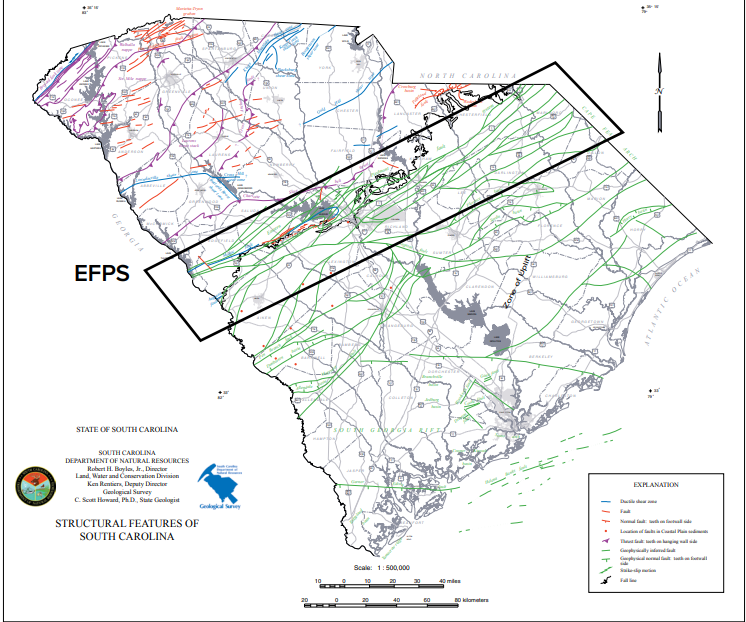There have been several rumblings, literally, in and around the CSRA in the past few months, but it’s probably not much to worry about.
More than 10 earthquakes have been confirmed in South Carolina in October, contributing to a flurry of seismic activity in that state, this year, that had already recorded by then. On Oct. 13, seven were confirmed in Greenwood County, S.C., roughly 37 miles north of Edgefield, with the highest magnitude among them being 2.53. A 1.9 quake was recorded in Aiken County, approximately six miles southeast of Jackson, on Aug. 26.
On the Georgia side, a 2.2 earthquake was recorded near Lincolnton on Oct. 16.
MORE: Three high schools are named winners of the seventh annual Battle of the Bands
Edgefield sits near the Eastern Piedmont Fault System (EPFS), which extends from Alabama through Georgia, the Carolinas and Virginia. This contributed to the series of earthquakes recorded in Elgin in 2022.
But proximity to fault lines doesn’t necessarily guarantee a prevalence of seismic disruptions, especially considering that fault lines are practically everywhere, notes Dr. C. Scott Howard, state geologist with the South Carolina Department of Natural Resources (SCDNR).
“Not all faults are active, and not all faults are capable,” said Howard. “Some are more so than others. You can hardly go anywhere in South Carolina, or anywhere in the country, without tripping over fault.”
MORE: Bill Clinton campaigns for Kamala Harris in Augusta
The last major earthquake in the Edgefield area was on Valentine’s Day in 2014, with a 4.1 magnitude that could be felt in Augusta. According to the United States Geological Survey (USGS), damage doesn’t usually occur under magnitudes of four or five, though other factors—such as the soil and building construction—contribute to how destructive an earthquake may prove.
“That’s about the largest earthquake you’re going to get in that part of South Carolina,” Howard said. “The majority of earthquakes tend to be of very little magnitude—ones, twos, probably. More earthquakes go unreported at lower levels of magnitude than that, because they’re just not strong enough to be picked up by the regional seismic network.”
Howard also says that some of the recent earthquakes in the Greenwood area may have been fallout from Hurricane Helene. The storm, he explains, may have pushed soil water into Lake Greenwood, causing the elevated water to create greater pore water pressure—or pressure from water in between sediment particles, which in turn can contribute to fault slips.
These “reservoir earthquakes” have occurred along Clarks Hill Lake, Howard notes.
“Those tend to be very small, they’re kind of one-off things usually, or they happen in a flurry, and then they’re gone,” he said. “Why doesn’t it happen every time the water levels change? Hard to say. But you do need to transmit pore water pressure, and that takes time and just the right setting. So there’s just a lot of things that come together that allow that to happen.”
Howard adds that earthquakes are “happening all over the place,” but not as noticed on the East Coast because they’re usually not as intense, especially compared to California, or, in South America, Chile, or in Japan, Indonesia or Turkey.
“But that doesn’t meant earthquakes don’t happen.”
Those curious about local area earthquakes can keep track of them at the SCDNR website.
Skyler Q. Andrews is a staff reporter covering business for The Augusta Press. Reach him at skyler@theaugustapress.com.










